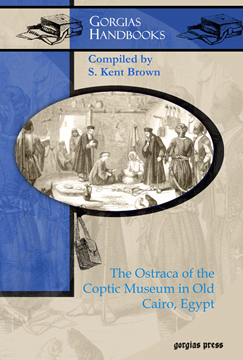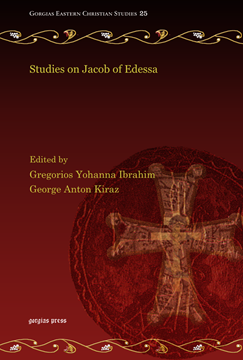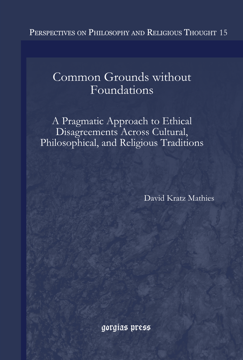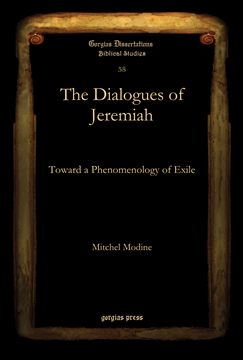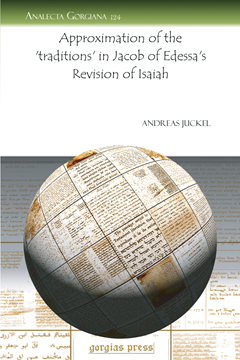Suryoye l-Suryoye
Ausgewählte Beiträge zur aramäischen Sprache, Geschichte und Kultur
Edited by Shabo Talay
Series: Bibliotheca Nisibinensis 1
ISBN: 978-1-59333-667-7
The present volume contains a collection of papers on different aspects of Aramaic linguistics, history and culture. These diverse papers are specifically intended for an informed Aramaic readership interested in raising awareness of their own culture. A fresh range of topics is therefore presented in this flagship volume of the series, offering a renewed vision of Aramaic and Syriac studies even for the specialists in the field.
$142.00 (USD) $85.20 (USD)
Community Participation in Scripture Version Design
An Experiment in Translating Jonah into Sabaot
Series: Biblical Intersections 5
ISBN: 978-1-60724-408-0
What strategies can be applied in producing an alternative version of Scripture that is complementary to the existing translation(s) and acceptable to the target audience? This book answers this question by exploring a theoretical strategy for this purpose. On the basis of Christiane Nord’s functionalist theory of translation, the author of this book formulated a Participatory Approach to Bible Translation and experimented with it in translating the book of Jonah into Sabaot, a Kenyan language. This book provides an excellent model for involving communities in the production of Scripture translations.
$178.00 (USD) $106.80 (USD)
The Ostraca of the Coptic Museum in Old Cairo, Egypt
Compiled by S. Kent Brown
Series: Gorgias Handbooks 13
ISBN: 978-1-60724-014-3
The Ostraca of the Coptic Museum, written on pottery pieces, limestone flakes and wood, present the lives of ordinary people in their interactions with one another, and includes their economic and personal affairs. This volume is a catalog of the 1,127 ostraca in the museum.
$179.00 (USD) $107.40 (USD)
Studies on Jacob of Edessa
Edited by Gregorios Yohanna Ibrahim & George Anton Kiraz
Series: Gorgias Eastern Christian Studies 25
ISBN: 978-1-60724-997-9
Jacob of Edessa was a seventh century polymath who witnessed the coming of Islam. In this collection of papers, specialists discuss the life and works of this figure with emphasis on the cultural landscape of the seventh century. Contributors include Sebastian P. Brock, Richard Price, Andreas Juckel, Alison Salvesen, Theresia Hainthaler, Amir Harrak, and Khalid Dinno.
$163.00 (USD) $97.80 (USD)
Enlivening the Past
An Asian Theologian’s Engagement with the Early Teachers of Faith
Series: Gorgias Précis Portfolios 3
ISBN: 978-1-60724-103-4
This collection of essays offers an innovative exploration by an Asian theologian on various issues and themes that engaged the early teachers of faith. It gives special focus to the ongoing relevance of these issues for Christian theological discourse and praxis today.
$131.00 (USD) $78.60 (USD)
A Reassessment of the Evidence and a New Interpretation
Series: Gorgias Eastern Christian Studies 22
ISBN: 978-1-60724-074-7
This comprehensive study offers a critical, comparative analysis of the sources available on Bardaisan and a reinterpretation of his thought. The study highlights the profound points of contact between Bardaisan, Origen, and their schools; the role of Plato’s Timaeus and Middle Platonism in Bardaisan’s thought, and Stoicism. Bardaisan’s thought emerges as a deeply Christian one, depending on the exegesis of Scripture read in the light of Greek philosophy. Positive ancient sources present him as a deacon or even a presbyter, as an author of refutations of Marcionism and Gnosticism, and as a confessor of the faith during persecution.
$208.00 (USD) $124.80 (USD)
Common Grounds without Foundations
A Pragmatic Approach to Ethical Disagreements Across Cultural, Philosophical, and Religious Traditions
ISBN: 978-1-60724-042-6
An alternative, fallibilist model of moral reasoning rooted in the American Pragmatic tradition. Additional resources drawn from Chinese philosophy, Jain epistemology, modern philosophy of mathematics, and the Gadamerian hermeneutical tradition serve both to corroborate the argumentation and to provide examples of continuities in reasoning that cross the boundaries of disparate traditions.
$177.00 (USD) $106.20 (USD)
The Dialogues of Jeremiah
Toward a Phenomenology of Exile
Series: Gorgias Biblical Studies 38
ISBN: 978-1-60724-028-0
An emerging consensus maintains that the exile was not as extensive as the Old Testament claims. However, that it held singular importance for the book of Jeremiah is beyond question. Modine argues that Jeremiah represents a range of options for understanding and responding to the events surrounding the destruction of Jerusalem and its temple. This volume reads the diverse contents of Jeremiah as a kind of dialogue between competing perceptions of the exile. The author argues that coherence is to be found precisely in the incoherent, as it reflects the communal trauma of exile.
$161.00 (USD) $96.60 (USD)
Virtuous Reading
Aphrahat’s Approach to Scripture
Series: Analecta Gorgiana 121
ISBN: 978-1-60724-035-8
The epistemology of the mid-fourth-century Christian scholar in Persia, Aphrahat, presumes that the human mind and the task of biblical interpretation are caught up in a dynamic experience of Christian spiritual transformation. In short, for the Persian Sage, good Bible interpretation requires nothing less than the total person—inner and outer, in community and before God. In Aphrahat’s Demonstrations, we encounter a scholar who not only presents this remarkably integrated set of ideals but is also an impressive practitioner of them.
$37.00 (USD) $22.20 (USD)
Approximation of the ‘traditions’ in Jacob of Edessa’s Revision of Isaiah
Series: Analecta Gorgiana 124
ISBN: 978-1-60724-036-5
This article contributes to the knowledge of Jacob of Edessa’s (d. 708) Old Testament revision by editing twenty texts (a total of 80 verses) from the Book of Isaiah and comparing them with the Greek recensions of the Septuagint, with the Peshitta, and the Syrohexapla. Two special features are introduced to set out Jacob’s revision technique in some detail: 1. comparison with an earlier undeveloped stage of Jacob’s revision extant in Ms Add 17,134 of the British Library; and 2. the distinction (by different colours and fonts) of the ‘traditions’ involved in the definite stage of his revision. Both features point to the emphasis given to the Peshitta in translating the substantial Greek text of the Old Testament.
$43.00 (USD) $25.80 (USD)


